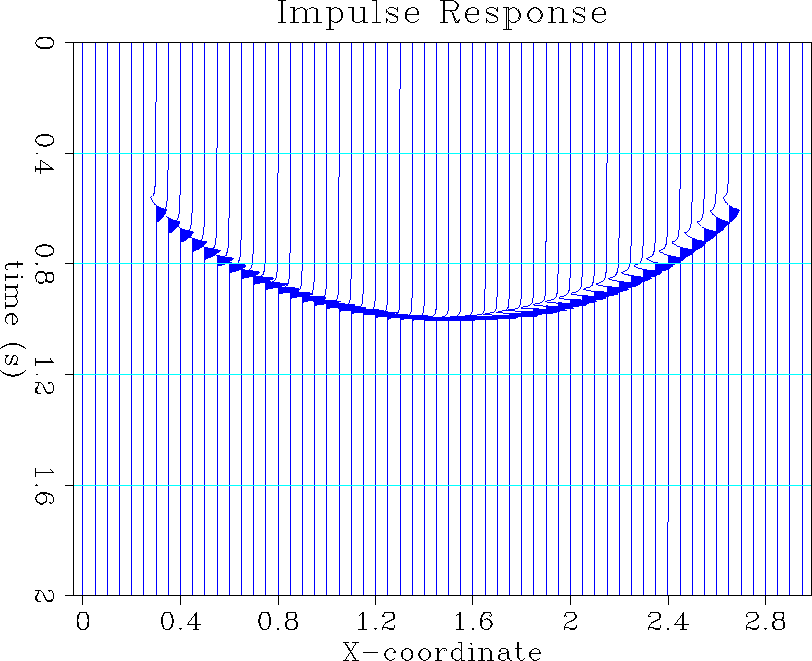For a given temporal frequency of the data, the increase in the dip of the operator produces an increase in the spatial frequency until it reaches the Nyquist frequency (two points per wavelength). Beyond that point, the operator is aliased.
Claerbout 1992 introduced an
efficient technique to avoid the aliasing of the operator
with Kirchhoff methods. Instead of spreading a simple spike along
the operator, a dip-dependent triangle is effectively convolved with
the operator. Assuming spatial spacing of ![]() , the width of
the triangle at a point of the operator is determined by
equation (2)
, the width of
the triangle at a point of the operator is determined by
equation (2)
| |
(2) |
Figure (2) shows the impulse response of a spike when the triangle anti-aliasing method is used. The phase shift caused by the half differential filter (usual in Kirchhoff methods) makes the triangles look like the teeth in a shark's jaw.
|
Iraa
Figure 2 Impulse response of the anti-aliasing integral DMO using triangles. Input spike: 1.0 s; velocity: 2000 ms-1. |  |
The triangular weight can be built with three spikes
![]() submitted to both causal and anticausal integration. The anti-aliasing
process is cheap because each output trace is double integrated only once.
submitted to both causal and anticausal integration. The anti-aliasing
process is cheap because each output trace is double integrated only once.